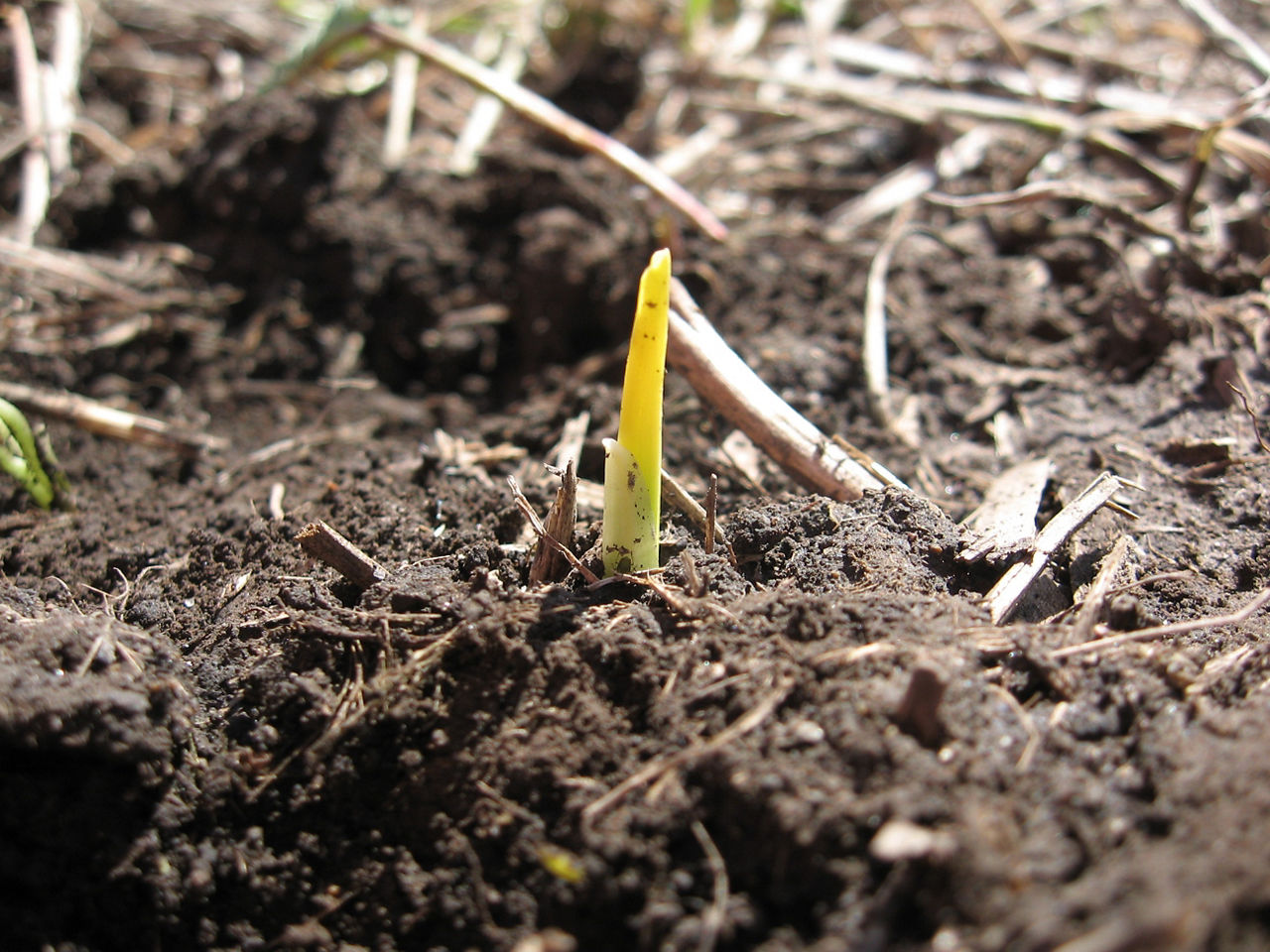5 MIN READ
Cold Temperature Damage to Emerged Corn
May 5, 2020
Air temperature after emergence can greatly affect corn seedling development. Moderately cold or warm temperatures can retard growth or increase growth, respectively. Very cold or very hot temperatures can be stressful and may cause plant death. Cold water filtering into the soil from rain or snow can cause seedlings to become deformed as they push through the soil or become stressed after emergence (Figure 2).

From VE to V6 (6 collared leaves) the seedling growing point remains below the soil surface and is generally protected from freezing air temperatures. If the air temperature falls below 28° F for several hours, the growing point can be damaged or killed. When temperatures remain above 28° F, foliar injury or death can occur, but the growing point is usually protected by the warmth of the soil, which can allow new growth to appear within a few days.2 Dead leaves may constrict around the seedling causing the new leaves to be deformed as they struggle to push through the dead tissue.
Visual leaf discoloration after cold weather can vary. Purplish leaves can develop when retarded root growth prevents the uptake of phosphorus (Figure 3). When leaves are purple, seedlings should be dug to examine roots for insect, disease, or herbicide damage. Purple leaves may also be due to genetics. Yellowish leaves can be a result of a combination of cloudy days and cool temperatures and a result of reduced or unavailable nitrogen uptake because of poor root growth or wet soils (Figure 4). Brown leaves are indicative of temperatures low enough to kill leaf tissue (Figure 5).
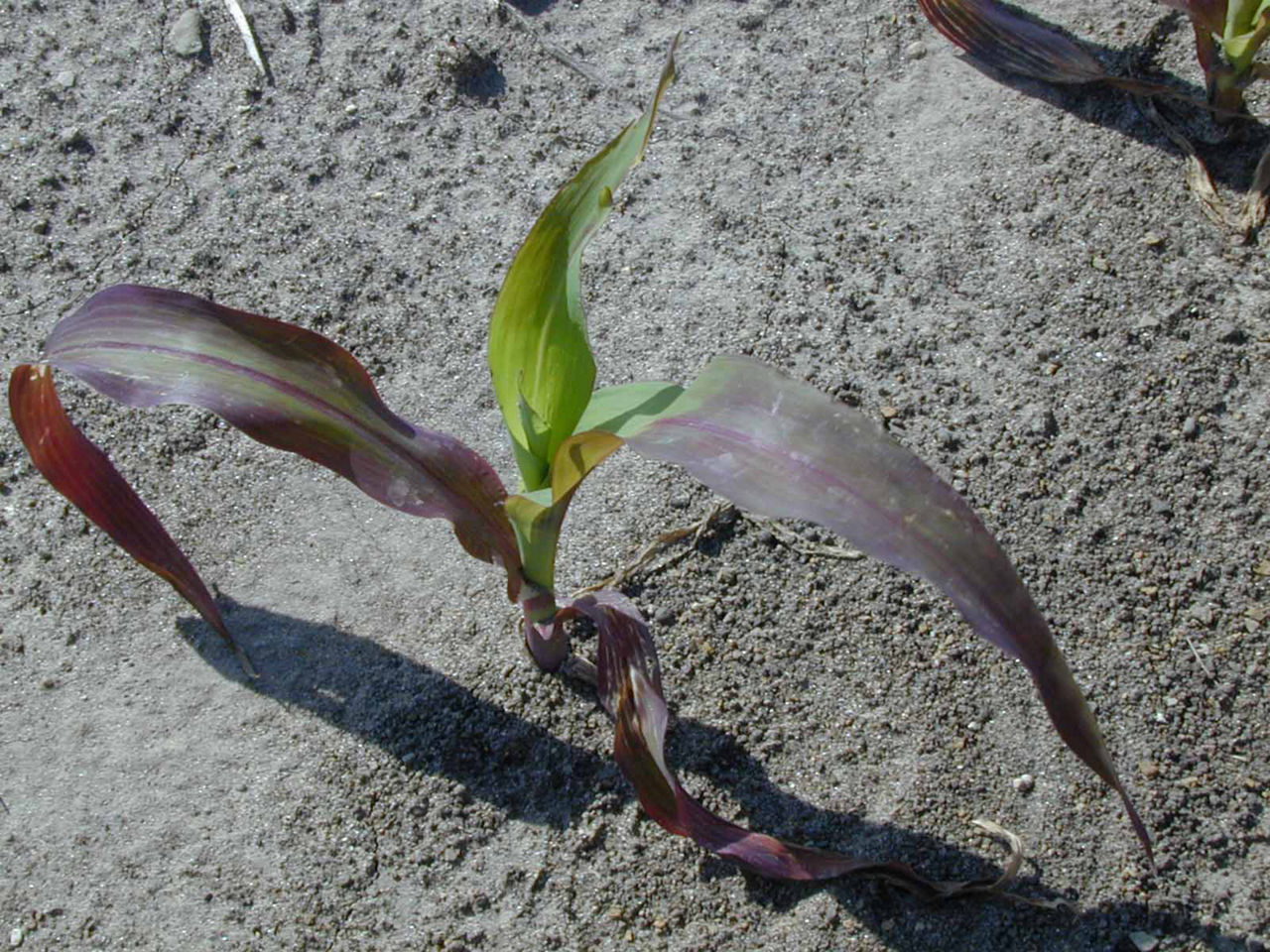

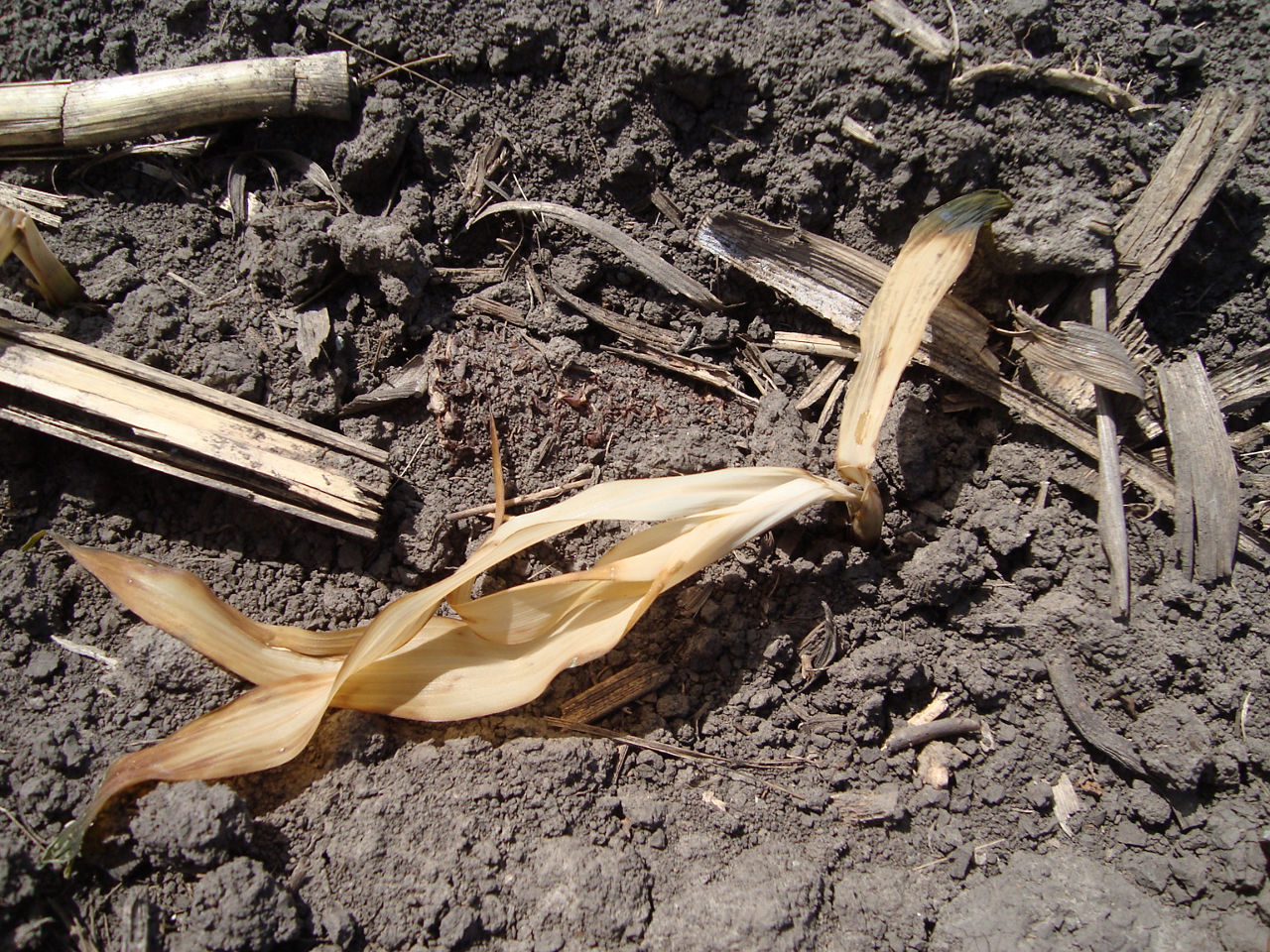
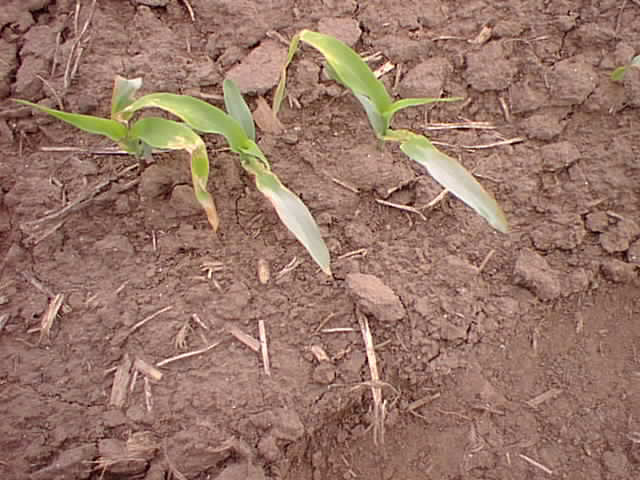
Another phenomenon that can occur after a cool night is leaf scalding. Water droplets that form on the leaves from the cool temperatures can be quickly warmed by bright sunshine and cause a silvery scald appearance on the leaves (Figure 6).
Individual plants within the same field can be affected differently, even plants side by side. Soil condition, residue, air mass, and soil moisture around individual plants are among conditions that can affect individual plants. After a severe cold event or frost, it is recommended to wait three to five days before assessing plant injury. If foliar tissue was killed but the protected growing point is alive, new tissue should be appearing within the three to five days indicating the plants are recovering and replanting should not be considered providing measured surviving populations are satisfactory (Figure 7)
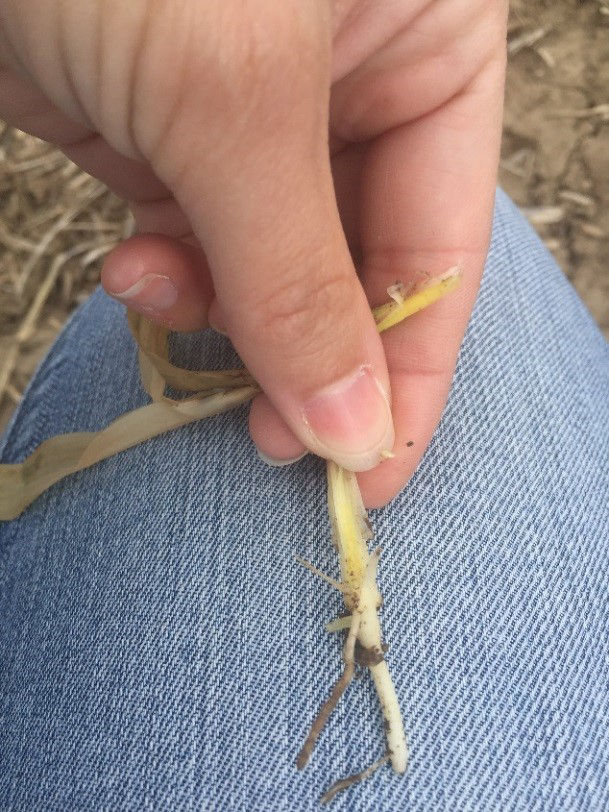
Growing degree days (GDDs), based on air temperature, is the most used method to measure and predict corn growth. Research has shown that corn growth after emergence is very limited below 50° F and slows above 86° F. Growing degree days are calculated using the average of the daily low temperature plus the daily high temperature minus the base temperature of 50° F.
The formula: GDD = (Tmax + Tmin ÷ 2) – Tbase. If the maximum temperature (Tmax) for the day is above 86° F, 86° F is used, if the minimum temperature (Tmin) is lower than 50° F, 50° F is used and Tbase is always 50° F.1 As an example, if the high temperature (Tmax) for the day was 76° F and the low temperature (Tmin) was 48° F, the calculation would be: (76 + 50) ÷ 2 – 50 = 13 GDDs for the day.
Generally, GDDs accumulate slower with earlier planting dates and faster with later planting dates; however, long, cool periods can slow corn growth and extend the period between each growth stage (Table 1). This can lead to misconceptions as to how “old” the plants are because of minimal growth, which may be a concern for herbicide applications.
Predicting corn flowering dates and maturity with the use of GDDs can be an important tool when planting is delayed, or replanting is a consideration. An approximate calculation of maturity relative to a season-ending killing frost can be determined based on the GDD accumulation and the maturity of a corn product.
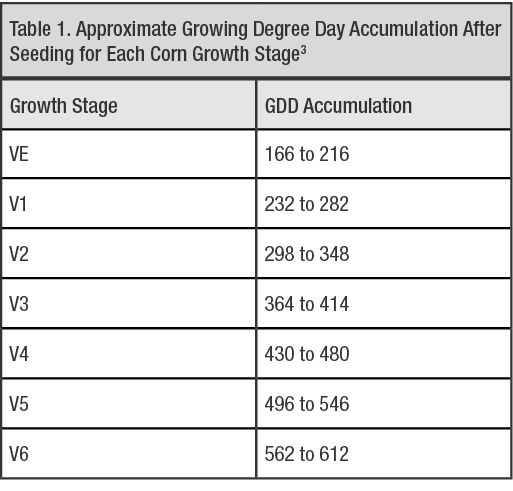
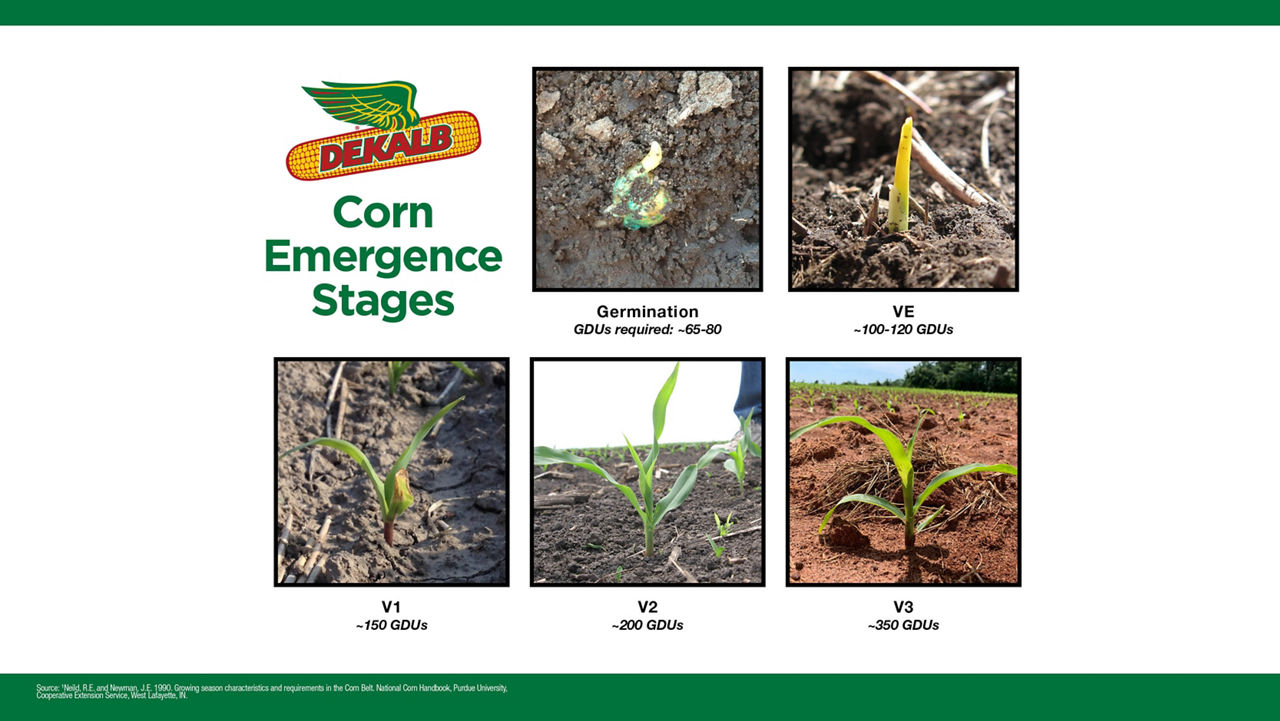
Sources:
1Lee, C. Corn growth stages and growing degree days: A quick reference guide. AGR-202. University of Kentucky College of Agriculture.
2Nielsen, R.L. 2002. Early season frost & low temperature damage to corn and soybean. Corny News Network Articles. Purdue University. https://www.agry.purdue.edu/.
3Nleya, T., Chungu, C., and Kleinjan, J. 2019. Corn growth and development. Chapter 5. Best Management Practices for Corn Production. South Dakota State University. https://extension.sdstate.edu/.
Web sites verified 2/25/2020
4013_S1
